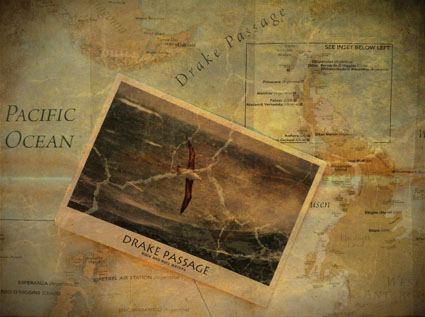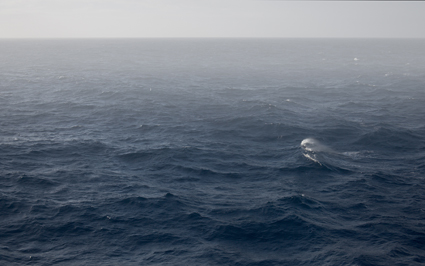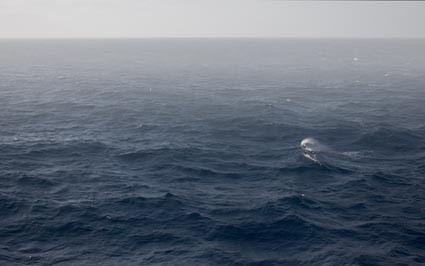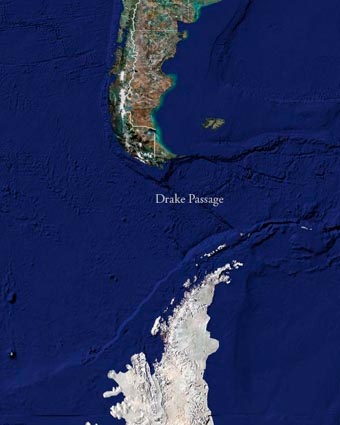More Drake. Smoother and smoother sailing. This is the easiest crossing I’ve had so far. And it’s the hardest to make images during; not much is happening visually (no white caps and spray, no glittery surface, no storm fronts or crepuscular rays). Last night we crossed over the Circumpolar Current at the Antarctic Convergence (roughly 60 degrees latitude) signaling our passage into the Antarctic. The Antarctic can be defined biologically (species), geographically (shifting currents of less salty colder water), or politically (there are many claims, all on hold until 2040). Our final destination is another important dividing line, the Antarctic Circle; below it in summer the sun doesn’t set, in winter it doesn’t rise.
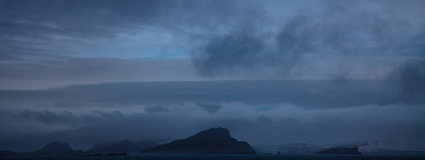
Find more Antarctica facts in my Statement Antarctica facts.
Steve Johnson presented on digital exposure today. Key ideas. Expose for histogram; process for appearance. Monitor your histograms to avoid clipping. Since the histogram is generated by a processed JPEG, using a low
contrast setting for JPEG generation in your camera will give you a better (but not perfect) preview of the data contained in your Raw file, which will always have more data than a JPEG. Finally, weight histograms high without clipping, the most data is contained in the lightest stop while the least data (hard to separate from sensor noise).
Jeff Schewe gave a blow by blow run down of Adobe Camera Raw. Thomas Knoll (the original author of Photoshop and Camera Raw) answered questions along the way. It’s going to be a really interesting trip!
Find out more in my Technique Downloads
Enjoy my Antarctica galleries, book, and statements.
Learn more about my workshops here.
Early registrants get discounts at home.
Members get discounts abroad.
